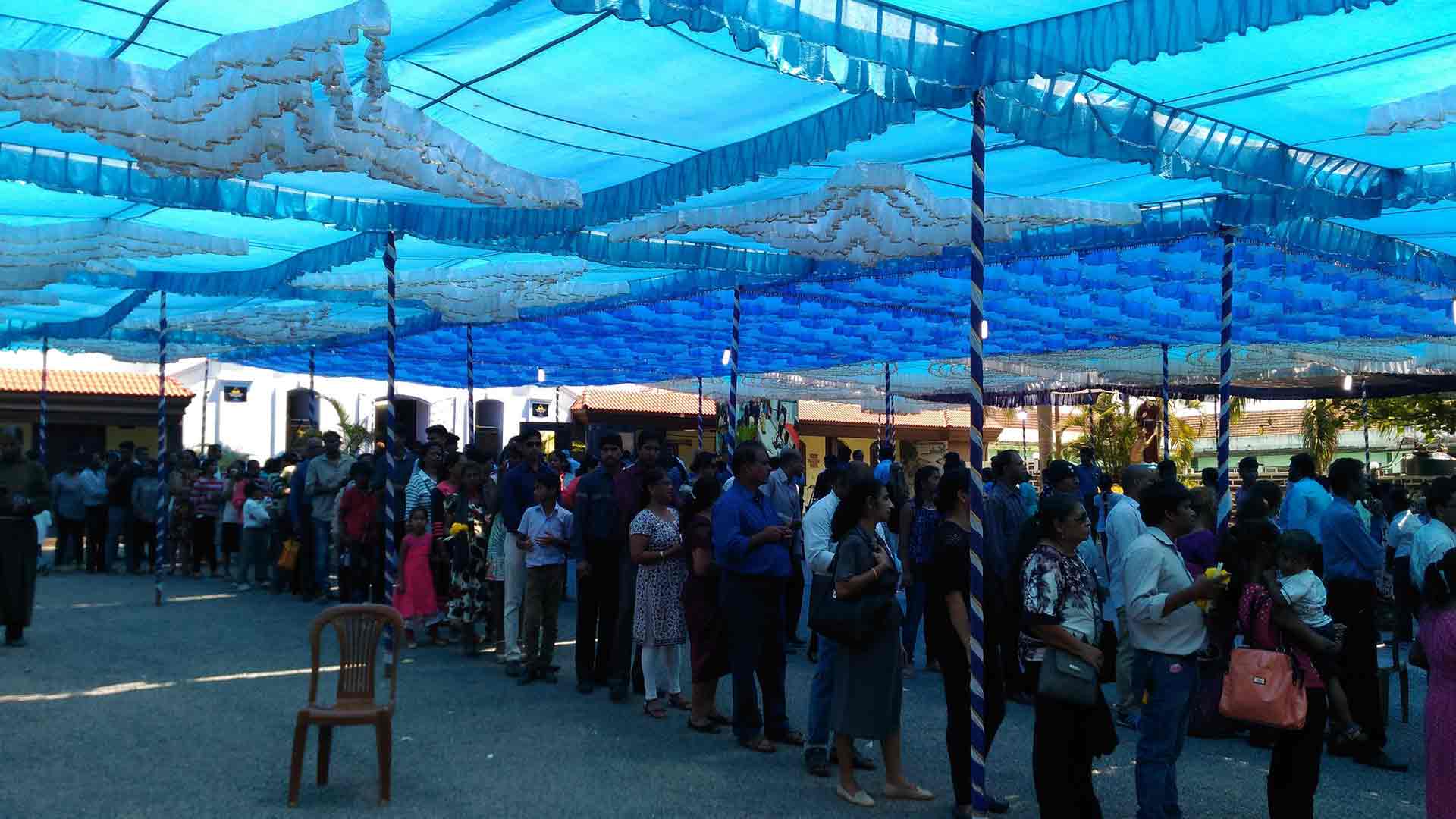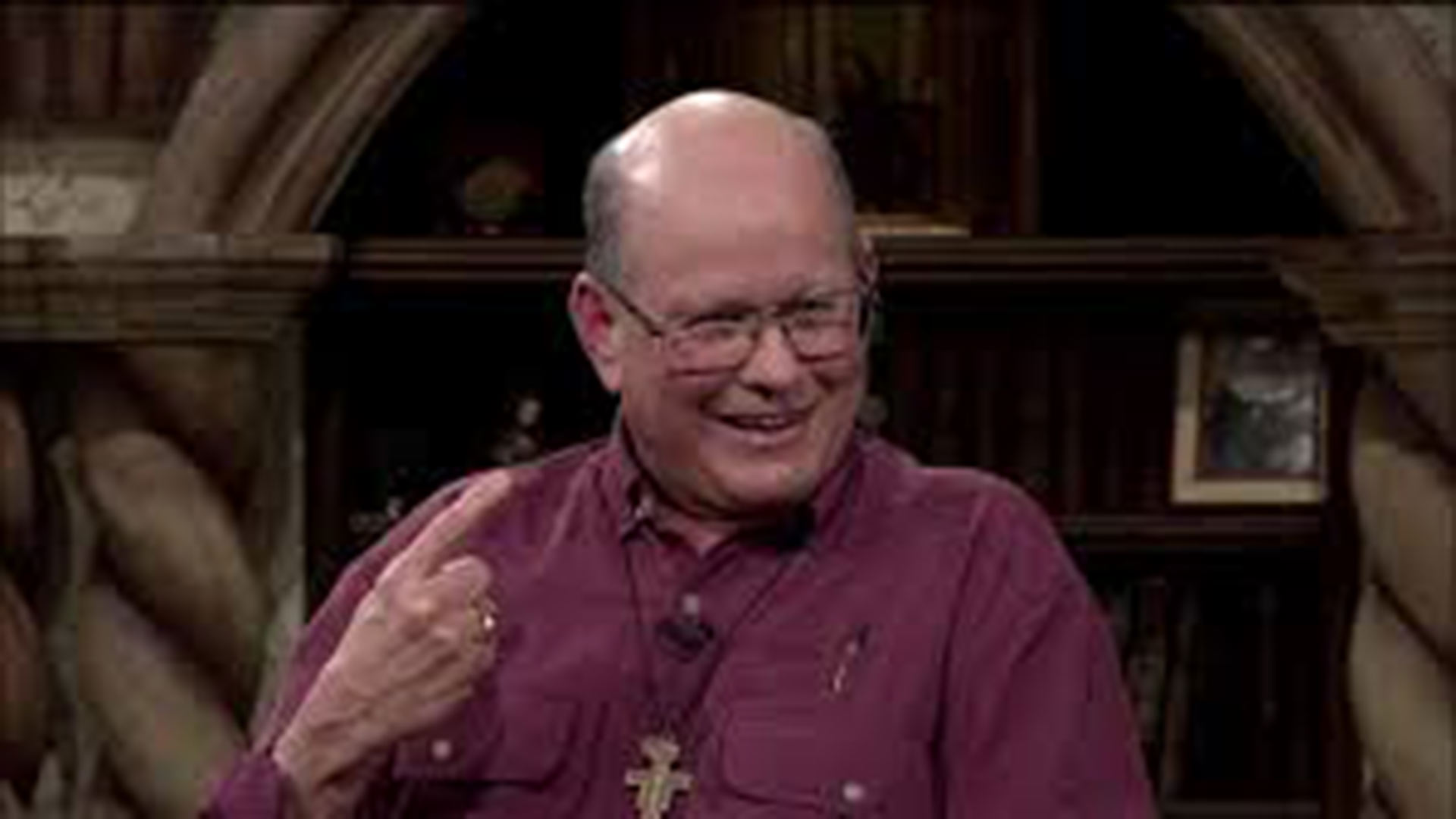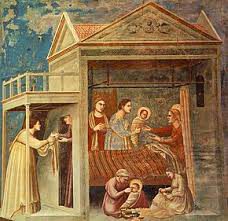Relics of St Anthony in Goa
The pilgrimage of the holy Relics of St Anthony covers India from 19 February to 20 March this year. This is being held to mark St Padre Pio’s 100 years of stigmata, the 50th anniversary of his death as well as that of the Capuchin presence at St Pio Friary, Navelim.
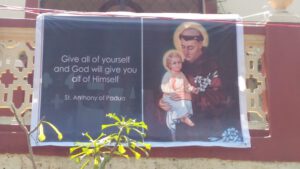
It may be noted that St Anthony, born Fernando Martins de Bulhões (1195-1213), in Lisbon, Portugal, worked and died a Franciscan friar in Padua, Italy. Hence the respective countries know him alternatively as 'St Anthony of Lisbon' and 'St Anthony of Padua'. This is perfectly legitimate for, in the Catholic hagiological tradition, a saint's place of birth, work and death are equal in importance.
St Anthony was noted for his powerful preaching, expert knowledge of Scripture, and undying love and devotion to the poor and the sick. He was one of the most quickly canonized saints in church history. He is a Doctor of the Church and regarded as patron saint of lost things.
In the year 1525, the religious Order of the Franciscans to which St Anthony belonged had a major offshoot in the Order of Friars Minor Capuchin (Latin: Ordo Fratrum Minorum Capuccinorum; post-nominal abbreviation, O.F.M.Cap.)
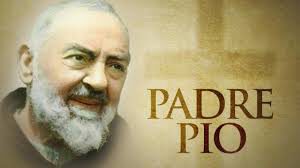
Fast forward to the twentieth century. Francesco Forgione (1887-1968) joined the Order of Friars Minor Capuchin. He assumed the name 'Pio' (Pius, in Italian) and later came to be known as Pio of Pietrelcina, his birthplace. A mystic, he eventually became famous for exhibiting stigmata (that is, appearance of bodily wounds, scars and pain in locations corresponding to the crucifixion wounds of Jesus Christ, such as the hands, wrists and feet). He was beatified (in 1999) and canonized (in 2002) by Pope John Paul II. A religious sanctuary takes his name at San Giovanni Rotondo, province of Foggia, Italy.

The present pilgrimage of the relics of the Saint marks an important milestone in the history of the Religious Order. It equally helps keep their use in perspective and promote the faith of the people. As St Jerome wrote in his 'Letter to Riparius', “We do not worship, we do not adore, for fear that we should bow down to the creature rather than to the Creator, but we venerate the relics of the martyrs in order the better to adore Him whose martyrs they are.”
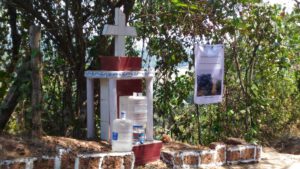
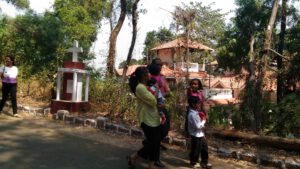
This is something that in our jet age some may find quite strange. But then, don't we treasure objects that once belonged to a loved one – be it a piece of clothing or even a lock of hair? And don't museums scout for and showcase items that belonged to the rich and famous - be it a writing pen or a gun or even a bullet that might have killed the person concerned? Similarly, Catholic believers treasure the relics of saints.
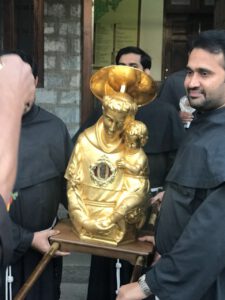 At the church of the Alverno Friary, Monte de Guirim, my family and I were among thousands venerating the fragment of petrified flesh embedded at the heart of a golden reliquary bust of St Anthony. And when a tiny silver reliquary caught our eye, they informed us that it contained the Saint’s smallest rib bone, otherwise designated for veneration only by the sick. Whereupon we kissed the reliquary most reverently.
At the church of the Alverno Friary, Monte de Guirim, my family and I were among thousands venerating the fragment of petrified flesh embedded at the heart of a golden reliquary bust of St Anthony. And when a tiny silver reliquary caught our eye, they informed us that it contained the Saint’s smallest rib bone, otherwise designated for veneration only by the sick. Whereupon we kissed the reliquary most reverently.
The Alverno Friars exhorted pilgrims to pray ardently even as an impromptu procession wended its way to the hilltop. Most people chose to listen to and sing hymns playing on the public address system, as a form of prayer. It took us a good 1½ hours to inch forward to the chapel housing the Relics. These will spend the second half of Saturday and the whole of Sunday, 4 March, at the Navelim friary.
Before we close, here's a nugget of information: the Friary is named after a similar house of the same Order, situated on Mount Alverno, Ontario. Although education is the main activity of the friars, they are also engaged in preaching the Word of God, spiritual assistance, other pastoral ministry in the chapels and parishes nearby. The friars are also chaplains to several convents in the neighbourhood. The Friars run a social welfare centre each at Guirim and Sangolda.
My family and I loved and felt blessed by the experience of resting our eyes on the Relics of St Anthony!
The Other Side of Mercy
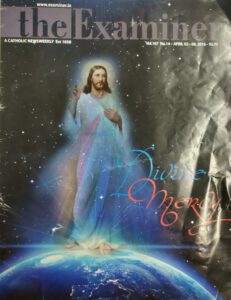
With Pope Francis’ Bull of Indiction Misericordiae Vultus (The Face of Mercy), God’s mercy has come into sharp focus – and rightly so. But, at the same time, are we obscuring its reverse side – the reality of Divine Justice ?
After quoting the Bible profusely to prove that God’s intrinsic nature is Mercy, the Pope goes on to cite his predecessors – first, John XXIII, who at the beginning of the Council said, “Now the Bride of Christ wishes to use the medicine of mercy rather than taking up arms of severity…”; and second, Paul VI, who at its conclusion stated that “a wave of affection and admiration flowed from the Council over the modern world of humanity. Errors were condemned, indeed, because charity demanded this no less than did truth, but for individuals themselves there was only admonition, respect and love. Instead of depressing diagnoses, encouraging remedies; instead of direful predictions, messages of trust issued from the Council to the present-day world.”
These words may have been evocative fifty years ago, fresh as the world was from the cruel acts of the two Wars and their convulsive aftermath; whether today they can be taken literally is debatable. Hasn’t the mass of humanity and individuals per se changed beyond belief? In fact, many an assessment of the Council points to a weakening of our religious faith and practice. Closer to our times, John Paul II, influenced by Sister Faustina, reiterated the theme of mercy, in Dives in Misericordia. But meanwhile, there was a further shift in modern man’s world view. Probably, this stemmed from the line of least resistance that the Church had adopted against the world’s vile tendencies, as is evident from Paul VI’s words on the said occasion: “The modern world’s values were not only respected but honoured, its efforts approved, its aspirations purified and blessed…”
Before long the entente with the world went awry. The new sense of freedom eventually brought about loss of the sense of sin (as the present Pope himself has elsewhere pointed out); so now we queue up quicker for Holy Communion than for Confession! That newfound freedom has spiralled into amoral, immoral, and blatantly anti-Catholic stances on the part of some of our ill-advised co-religionists; it has erected a sheer façade of spiritual health and a make-believe atmosphere of well-being, even while the community’s moral and spiritual fibre is weakening.
Will merely soothing words help restore the balance? Will not ‘Mercy’, used loosely – much like ‘Love’ that is now more readily seen as eros than as agape – eventually be a casualty? It probably will, if we continue to proclaim it from the rooftops without the least contemplation of Justice. In Misericordiae Vultus, Justice finds a place after nineteen sections extolling Mercy; even then it is equated with a tendency toward legalism. Finally, the reminder that, “for his part, Jesus speaks several times of the importance of faith over and above the observance of the law”, may have put many on the back foot.
But presently we would only stress the importance of gazing at the face of Justice. Aren’t many ills of the contemporary world a consequence of the neglect of the divine law and justice? Much like our school children nowadays accustomed to ‘automatic promotions’, only to be shocked when confronted with the spectre of the Board examinations, leniency in spiritual matters could have a like effect even for believers. Would it therefore not be better to have our senses so sharpened that we take to justice like fish to water? The wheels of society would then be well oiled and running smoothly; we would live with honour and in peace.
In Immortale Dei, Pope Leo XIII notes that “there was once a time when States were governed by the philosophy of the Gospel.” Today, in stark contrast, secular and atheistic philosophies have resulted in heterodox and muddled thinking. The teaching authority of the Church has to step in firmly and help the faithful swim against the tide. The aid thus received would be useful in practical, day-to-day matters, and vital from the perspective of the Judgement. Unless we are used to the idea of justice, will the certainty of the Judgement sink in?
To conclude: Favouring Mercy to the detriment of Justice would be a disservice to God and Man. The two are not antithetical; in fact, justice without mercy is cruelty, said St Thomas Aquinas; but mercy without justice is the mother of dissolution, he added. So let’s talk of Mercy and Justice in the same breath, and then have a “faithful abandonment of oneself to God’s will”.
(Published in The Examiner (Bombay), Vol. 167, No. 14, 02-08 Apr 2016)
A Ray of Hope from a faith formation seminar
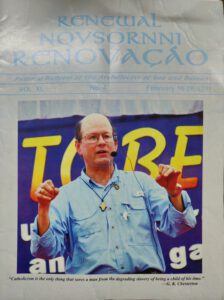
My mind races back to 1977-78, when my siblings, friends and I attended a prayer meeting spread over three evenings, at the Azad Maidan, Panjim. We went with some trepidation since it was a Protestant pastor giving his testimony. What finally clinched it for us was that stirring question “What does it profit a man if he gains the whole world but loses his soul?” which we saw splashed in bold, white lettering across a dark blue banner. Hadn’t a young and impetuous man once been transfixed by those very words? So, reassured by the familiar image of Goenchó Saib, we skipped our playtime and went.
The huge backdrop spanning several columns of the then Albuquerque memorial must have been designed to rope in naive Catholics; its text was ‘gripping’, because we teenagers were groping. In the end the meet did not satisfy us. Notwithstanding the histrionics that mark Protestant gatherings, we did not find the living bread and water that we were seeking; we only found ourselves gazing at Christian teaching through cracked crystal – which is what Protestantism is.
But the good side of it is that it whetted our appetite for manna that only the Catholic Church can give. We realized it was the same old story of not being grateful for what we have until we have lost it – which is the larger point that Stephen K. Ray, popularly known as Steve Ray, drove home at a faith formation seminar titled ‘It’s Great to be a Catholic!’ The event, organized by our Archdiocese at Pilar College Grounds, on 22-23 January 2011, was attended by some two thousand laypeople from across Goa. Given below are highlights of the issues covered by Ray: some treasured doctrines of the Catholic Church; and why dedicated apologists are the need of the hour.
Catholic Treasure
Can we afford to just stand and stare, or be ‘Sunday Catholics’ at best, when there is so much about the Catholic Church to learn and share?
Ray, a former Baptist, began with a moving testimony on how he ‘came into the Catholic Church backwards’. He was attracted by the solidity of the Catholic teaching vis-à-vis the inanity of worship, the skewed interpretation of the Bible, and the relativity of moral teachings, rampant in the Baptist church. Finding it ironical that Catholics, who are privy to doctrinal treasures, “don’t share their faith”, he urged the laity not to regard the faith as something private but rather to proclaim it proudly, for “we are duty-bound to be good evangelists.” He pointed to the USA, where the Catholic Church is growing from strength to strength, in number and quality.
Passing on to ‘Scripture, Tradition and the Magisterium’, all of which the anti-Catholics love to hate, Ray quoted Pope Paul VI, who endorsed the “fifth Gospel” – Israel – which we have to believe in so as to understand Catholic teaching in its entirety. We cannot afford to “throw out the Old Testament, like old bread” because therein lies the foundation of our faith, and of which the New Testament is the fulfilment. Quickly reminding critics who bank solely on the Bible and decry history that the Bible itself is a product of history, the Apologist galloped his way to Caesarea, Phillipi, to uncover the eloquent backdrop to Jesus’ idea of Peter as the ‘Rock’. “If the Catholic flock understood this, none would ever leave the Church,” he said, adding half in jest, “Sheep are stupid, and leave; only the smart ones remain!”
Ray dealt at length with the ‘Papacy: Apostolic Succession and Infallibility’, which is the subject of his book Upon the Rock (Ignatius Press, 1999). He demanded to know why the Papacy is thought by a few to have ended with Peter, when a presidency does not end with the death of a President! He stated that the Pope is ‘the Holy Father’, not because he is sinless but because he is ‘consecrated, set apart for a holy purpose.’ He remarked that, curiously, the Pope is a source of unity for all Christians: for those who believe in him as well as for those who gun for him in unison!
Significantly, the theme inscribed on the backdrop was “You are Peter and upon this Rock I will build my Church, and the gates of Hell will not prevail against it.” (Mt 16: 18) Ray confessed that, as a Baptist preacher, he would pick Catholics like a ripe apple with his standard objection, ‘But where do you find the word Pope in the Bible?’ Now, as a convinced Catholic he counters that with ‘But where in the Bible is it said that you must find everything in the Bible?’ This quip soon turned into a cheery refrain, echoing under the massive blue-and-white pandal: it now serves as an opening rebuttal for budding apologists to consider.
‘Mary’ was another keystone of the Catholic Church that Ray focussed on. To decipher this “great problem for the Protestants”, Ray transported us from the earthly Jerusalem to the New and Eternal City. From the cave (now St Anne’s Church) where Mary was “immaculately conceived” and endured a “tough Jewish life”, we were guided through the awe-inspiring Annunciation and Visitation (7 days’ walk in the Jordan valley, 160 km in 45º C) to the Nativity and the Holy Family’s vicissitudes in Nazareth (to be seen as “God endorsing the dignity of labour”).
Reflecting on the glories of Mary, Ray considered her life post Joseph’s death when Jesus was but 12 years old. It was she who set in motion her Son’s ministry, at Cana, and this established her centrality in God’s plan of salvation. At the time of Jesus’ death “God rewound history”: Eden became Gethsemani and Satan returned as Judas; and whereas at Eden death stuck into the Tree of Life, at Calvary life sprung up at the Tree of Death! And in all of this Mary’s role was unmistakable: her Son became the New Adam and she the new Eve; she revealed herself as the Ark of the New Covenant; was present at the birth of the Church in the Upper Room; and having been assumed into Heaven and crowned Queen (reminiscent of Solomon who enthroned his mother), she remains our supreme intercessor.
Speaking on ‘Eucharist: Source and Summit of Catholic Life’, Ray stated that its definition had remained unchanged for 1500 years until “a bunch of Protestants who called themselves magisterial reformers” began to find fault with it – and then couldn’t come to an agreement on it themselves! This led to hundreds of definitions of “This is My Body… and Blood”. He stressed the need to go back to the typology found in the Old Testament, since it prepares us for the Eucharist, from Melchizedek to Malachi. In the New Testament, Bethlehem (meaning ‘House of Bread’, and where Mary “delivered the Bread of Life”) and the Passover Meal are significant.
Ray pinpointed John 6: 63 as a thorn in the side of the Protestants. He reiterated that the Eucharist is more than just a meal – it’s a sacrifice; and the table of the Lord is more than an ordinary table for that meal – it’s the altar for that sacrifice. Jesus meant it precisely that way – truly, not symbolically – but the Jews were unable to stomach it, and so rejected the Son of God.
Finally, Ray did not mince words on the thorny issue of ‘Salvation’. The first sentence of § 1257 of the Catechism says that “The Lord himself affirms that Baptism is necessary for salvation,” and then the last one: “God has bound salvation to the sacrament of Baptism, but he himself is not bound by his sacraments.” He categorically stated that we gain salvation not through the merit of our good works, or by faith “alone” (as Luther insisted), but by God’s grace and mercy. He picturesquely termed Purgatory as the “front porch of Heaven”. Urging the faithful to believe in Jesus, he noted that the opposite of “to believe” is “to disobey” (Jn. 3: 36).
Historic Milestone
Ray spoke with knowledge and verve, wit and humour. Two question hours were part of the agenda, which saw Ray fielding a wide variety of issues – from the meaning of ‘apologist’ to indulgences; the New Age movements; modest attire; home schooling; ‘property gospel’; contraception; celibacy; tithes; healing services; alternative medicine; and Heaven and Hell. When unaware of a regional peculiarity (viz. the existence of a sect named ‘Believers’ in India) he was eager to learn. He was sharp and answered questions with precision; only once did he fail to disentangle a long list (ecumenism, inter-religious dialogue, etc.), inadvertently, for sure.
Ray is admirable, his style simple and direct, his speech accessible. Above all, he has the force of conviction stemming from an intimate experience of a living God and years of learning and practice – of which have the power to revive a sluggish faith. His approach is “pastoral – not combative or harsh”, as he says of his own book, Crossing the Tiber (Ignatius Press, 1997), a world bestseller, which recounts his momentous decision to turn Catholic.
The Apologist touched our hearts. Braving the heat of the noonday sun, the audience listened with rapt attention, all seated in a shamiana that felt like a makeshift church (but definitely way above any that our ancestors must have witnessed in their primitive, improvised structures). On one occasion, in a post-lunch session, some of us were at the end of our tether, even while the speaker was adjusting the collar mike to begin his talk; and, quite unexpectedly, there came a cool and refreshing breeze – like the Holy Spirit making his presence felt! – and blew away all our troubles.
While, on the one hand, Fr Manuel Gomes’ able interpretation of the talks into Konkani was reminiscent of a similar task that Fr Joseph Vaz undertook for two famous preachers from Portugal at the retreats they conducted in the Goan countryside; on the other, the entire rustic setting of our seminar made us wonder how it must have felt to be listening to pearls of Christian doctrine as they first cascaded from the lips of Our Lord, be it on the mount, by the sea or in the Jewish town.
There is no doubt that Goa was ripe for Ray. We gratefully acknowledge our Archbishop Filipe Neri Ferrão’s personal endorsement of his visit. Not only was this symbolic of a ‘refresher course’ in Catholicism five centuries after the Portuguese missionaries planted the seed; but, more importantly, it was a fitting response, although long overdue, to the historical and contemporary dangers that, from within and without, assail the former bastion of Catholicism in the East. This was perhaps an unprecedented event, and most certainly a historic milestone in the life of our venerable Archdiocese.
In a brief tête-à-tête, our enthusiastic and friendly Archbishop – who, I must highlight, sat through both days – described the faith formation seminar as “refreshing”. He appreciated Ray’s “way of presenting” matters and found it “great to listen to a layman preach”. He had particular regard for him for being “very loyal to the Church.”
For his part, Ray appealed to laypeople and priests alike not to shred the Body of the Church, and endorsed the wisdom of staying under the authority of the Bishop.
The Road Ahead
Here was Apologetics in action, perhaps in a long time! A vivacious Goan apologist, Francisco Correia Afonso, once said something to this effect: We need no apologetic Christians but Christian apologists!
In fact, the Goan priest and lay apologists first emerged a century ago, in the wake of the anti-Catholic and anti-clerical republican regime; they exerted themselves in the service of the Church for five decades, after which there was a lull, because the time had come – as another great convert-apologist G. K. Chesterton put it, albeit with reference to another time and place – “when the Christian [was] expected to praise every creed except his own.”
At Pilar both the Apologist and the Archbishop felt it necessary to pray for a new batch of Defenders to emerge. While Apologetics might seem only a matter of learning to explain and defend our Faith, it is as much a matter of confidence, prayer and commitment. This cannot be a solo venture; the faithful must fervently desire it all together. So can we get our act together? And how do we create the right conditions?
Especially for an apologist, learning should not only mean acquiring general knowledge, but more importantly, acquiring a Catholic perspective on that body of knowledge. For the specialized knowledge required, The Essential Catholic Survival Guide (Catholic Answers, San Diego, 2005) suggests a roadmap beginning with the Bible, and going on to the Catechism, which will help interpret the material of the Bible in the context of what the Church has historically understood it to mean. Then would come a study of the objections made against our faith by anti-Catholic literature and the responses to them. Finally, to successfully rebut both non-Catholics and anti-Catholics one would have to master the arguments put forth by Catholic writers.
But what kind of people would accept the challenge of making time for religious studies and putting them on par with their secular studies? Only they may care to do so who have a profound confidence in God and exercise this virtue amidst the prosaic realities of life. Those of us imbued with materialism, who trust ourselves better than we do God and have no qualms about taking short cuts to ‘success’, oblivious of principles and unmindful of consequences – we are called to do a rethink.
If our preachers and catechists became more spirited, more apostolic, and less bureaucratic, for many confidence in God would not remain just a theoretical proposition; if our small Christian communities interpreted the Bible not as ‘free thinking Catholics’ but strictly as taught by the Mother Church, sects would not flourish; if adult catechesis were taken up with a sense of urgency, our households would become nurseries of apologists; if our faith were nourished beyond Confirmation or the ‘booster dose’ received at Marriage – and if the Sacraments were used optimally – we would never run the risk of having a faithful devoid of faith or confidence in God!
Our learning and confidence can be sustained only by a life of prayer. Whereas we can do nothing on our own, with God there is nothing we can’t do. This requires of us to pray and to undertake all our endeavours prayerfully.
But what does one pray for – why and how? Oh, the fond memories I have of that school catechism that taught us, “God has made us to know Him, love Him and serve Him above all things”! In those days it had perplexed us – ‘But what of my little toys, which I love so much?’ Today that incipient catechism does makes all the sense. If we treasure our moments of interior recollection and cherish the moments of divine inspiration, the joy of Christian learning, confidence and prayer will be effortlessly reflected in our social interaction, to the benefit of all.
A special Apostolate of Prayer, if officially instituted, would help to impress upon our minds the need to pray. The faithful could also be invited to introspect, and to examine issues of the spiritual and material order that they find disquieting and barriers for sanctification. To supplement the questions dropped in the Box at the seminar venue, fresh queries could be solicited from our parish councils, all of which might provide an insight into the mind of our lay faithful.
In due course, learning, confidence and prayer will build character and commitment in our faithful. Then, from them will rise apologists with an unselfish zeal and a spirit of sacrifice, whose habitual posture will not defensive but pro-active they will learn to face public opinion with courage, serenity and self-control; and deal with the adversary with meekness and firmness, capitalizing on the Apostolate of the Presence.
Given that the ways of the world are inimical to the Church, and the secular Press traditionally confuses issues, our Archdiocese could consider setting up a newspaper in Konkani and English to enlighten the people with proper perspectives.
In our day and age it is important to employ all means of communication at our command. This is imperative in faith matters. Hasn’t a lot of water gone down the Mandovi since those sporadic Protestant prayer meetings of the late 1970s? What in yesteryear and to our tender minds seemed innocuous did eventually cause religious indifferentism to grow amidst us. But, thankfully, most of us still believe that it’s great to be a Catholic. And we have no doubt that when the hour strikes the Goan Apologist will be found. We have seen Ray… and we see a ray of hope on the horizon!
(Renovação, Vol. XL, No. 4, 16-28 Feb 2011, as 'Ray of Hope: Reflecting on a Faith Formation Seminar)
Mary, our Star and Haven
Christ is at the centre of our Faith; His glorious Resurrection is its bedrock. But none of this would be possible if not for Mary! It was through her that our Father in Heaven sent us His Only Son; it was through her that He worked out the history of our salvation. On her part, by willingly cooperating in God’s plan for estranged humankind, Mary was privileged to receive, in the words of Pope John Paul II, the “deepest knowledge of the mystery of God’s mercy.”
Mary is thus less off-centre than some of us may imagine. If Christ is the Sun, she is the Moon; she is a reflection of His radiance, in whose light we journey or sail through time. She is a sure guide for our steps. She prays for us sinners, now and at the hour of our death. She leads us to the Father and the Son in Heaven. For all this she is naturally deserving of our love and attention.
When we sing and pray “Be with us, Mary, along the way…” we can trust Our Lady, Queen of Heaven and Earth, to be to us that guiding star and safe haven all at once!
The Church proclaims – and we can see – Mary’s living and active presence in our day-to-day existence. She touches our lives; she who had a personal experience of the ups and downs in our valley of tears watches over us, like a true mother keen about her children’s welfare. She is our mother of mercy, our sweetness and our hope. She is our mother most faithful, who never leaves us unaided when we fly to her patronage or implore her help. She is our mother, holy, tender and kind, a shining model of faith, hope and charity.
Catholic Tradition invokes our Blessed Mother in myriad ways. Devotion to her is “intrinsic to Christian worship”, says Pope Paul VI; and it is expressed through liturgical feasts dedicated to her, and through Marian prayer, such as the Rosary. To our local faith community she is the Star of the Sea – not only because we are in physical proximity of deep and unknown waters, and our people are a sea-faring lot; but also because, on a universal plane, the sea is a symbol of life’s many perils through which we all need to be piloted to a safe haven.
When we sing and pray “Be with us, Mary, along the way…” we can trust Our Lady, Queen of Heaven and Earth, to be to us that guiding star and safe haven all at once!
(Editorial, The Stella Maris Bulletin, Miramar, Vol. 3, No. 1, October 2009)
